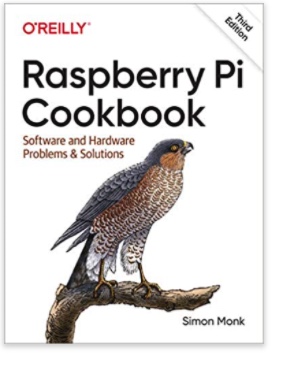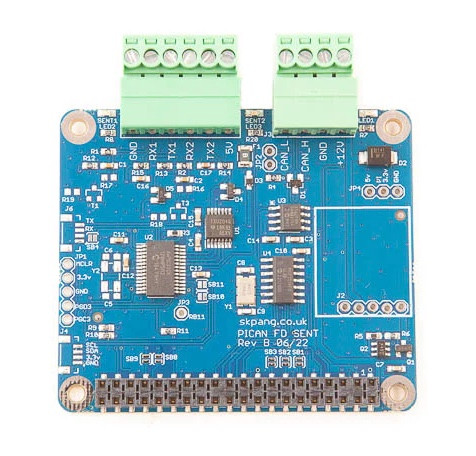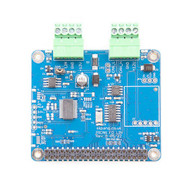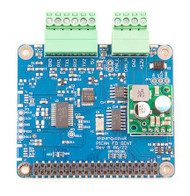- Home
- Raspberry Pi
- PICAN FD with SAE J2716 SENT for Raspberry Pi
PICAN FD with SAE J2716 SENT for Raspberry Pi
Product Description
Free Shipping Within the United States!
This PiCAN FD board comes with SAE J2716 SENT, Classical CAN, and CAN FD provided by the Microchip MCP2518FD IC.
A dsPIC33 micro-controller provides SAE J2716 SENT. The communication to the Raspberry Pi is per UART on ttyS0 using ASCII text commands. An example SENT GUI app is available written in Python3 and tkinter.
The firmware is updatable using the Microchip UnifiedHost java app, which requires the Raspberry Pi running in GUI mode.
Also included is an easy-to-install SocketCAN driver, and Python programming is supported.
If you need this HAT with a 3A SMPS module that can power the PiCAN FD SENT board and Raspberry Pi from 7 VDC to 24 VDC external supply, please see:
CAN FD Features
- Microchip MCP2518FD CAN Controller
- Arbitration Bit Rate upto 1Mbps
- Data Bit Rate upto 8Mbps
- CAN FD Controller modes
- Mixed CAN 2.0B and CANFD mode
- CAN 2.0B mode
- High speed SPI Interface (10 MHz)
- 120Ω terminator ready
- LED indicator (GPIO04)
- Four fixing holes, comply with Pi Hat standard
- SocketCAN driver, appears as can0 to application
- Interrupt RX on GPIO25
SAE J2716 SENT Features
- Two independent SAE J2716 SENT channels
- Each channel can be configured for Tx or Rx
- Configurable Tick Time and Frame Time
- Status LED for each channel
- 5v DC output to power small sensor
- Powered by Microchip dsPIC33 micro-controller with updatable firmware
- Communicate to the Pi via ASCII text commands on ttyS0
- Python3 demo GUI app on Raspberry Pi
Documents
Software
Other Resources
 Raspberry Pi Cookbook: Software and Hardware Problems and Solutions
Raspberry Pi Cookbook: Software and Hardware Problems and Solutions
With millions of new users and various new models, the Raspberry Pi ecosystem continues to expand, along with further questions about the Pi’s capabilities.
The third edition of this popular cookbook provides more than 200 hands-on recipes that show you how to operate this miniature low-cost computer with embedded Linux; program it with Python; hook it up to sensors, motors, and Arduino boards; and even use it with the internet of things (IoT).
Prolific hacker and author Simon Monk also teaches the fundamental principles to support your use of new technologies with the Raspberry Pi.
This cookbook is ideal for programmers and hobbyists familiar with the Pi through resources such as Getting Started with Raspberry Pi (O’Reilly). Code examples from the book are available on GitHub.
 Loading... Please wait...
Loading... Please wait...












